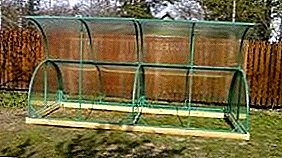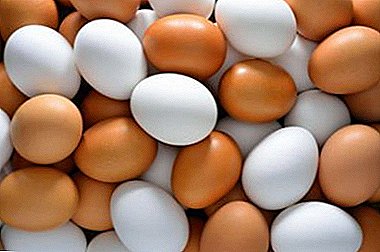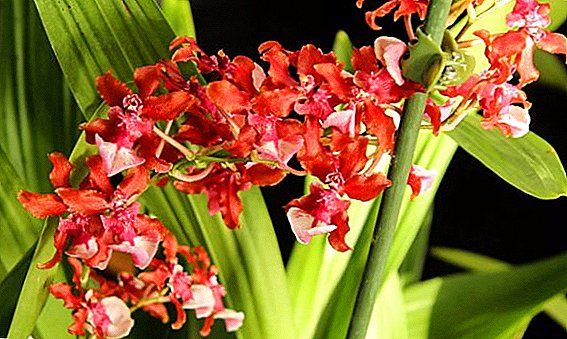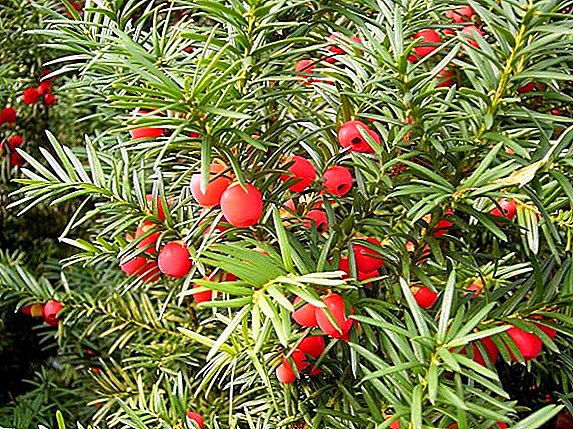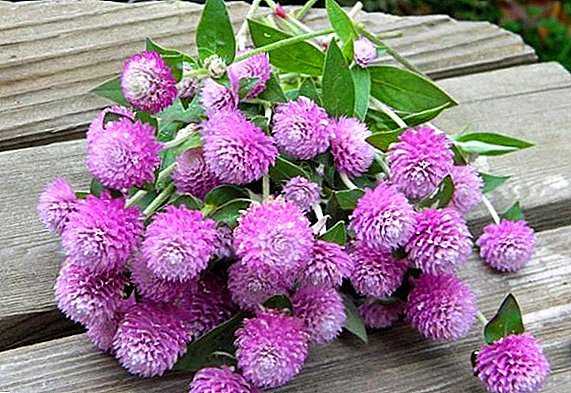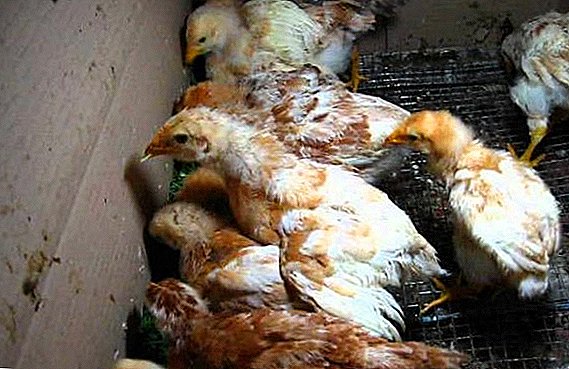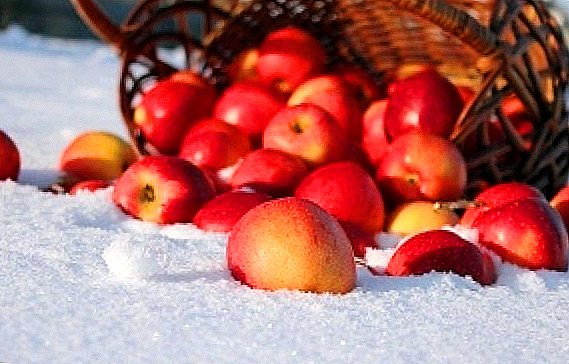
If you have at least a small piece of garden land at your disposal, then the right decision will be to plant a winter apple tree on it, because its harvest will delight precisely when there is so little fruit. To decide which variety to give preference, it is necessary to get acquainted with some of them in detail.
Probably, not everyone knows that there are more than 20,000 species of these wonderful fruit-bearing trees, and, therefore, having examined in detail the most popular ones, you can choose the very beauty that suits your taste. So…
Apple variety Antonovka
Variety descriptions
Oval fruit This apple tree is known for all its golden yellow color and unique aroma. Antonovka is widespread throughout Russia, because perfectly responds to any climatic conditions of our strip. During the harvest, the apples have a light green color with yellow barrels, they are characterized by a rather strong rustiness of the funnel.
The flesh is very juicy, snow-white, crispy with a stunning sweet taste and slightly sour. In size, they can be called average, the typical weight of an apple is 150g. In September, the harvest of these apples is ready to be harvested, and subject to the necessary storage conditions, the collected fruits will delight you until January.

Trees This variety has a luxurious, dense foliage and strong brown bark, which is not afraid of even severe frosts. It was noted that very young seedlings of this variety tolerate harsh winters. Blossom Antonovka begins late, at the end of spring. I would like to note that winter varieties are different from summer ones in that their fruits have two degrees of maturity - this is consumer maturity and removable.
Consumer maturity - this is the time when the fruit acquires all its inherent qualities: aroma, taste and color. Removable maturity is the moment when the fruits are already fully formed and ready to be harvested. Summer varieties, we can use immediately after harvest.
The term of consumer maturity in Antonovka's apples comes a month later, after harvesting. This species enters fruiting rather late, in the 7th year after planting, but with proper and good care, the crop can be harvested in the 5th year.
This tree has enough plusesto lead among winter varieties. This is a very high resistance to severe frosts, and a remarkable resistance to such a disease as scab. The duration of storage of the crop and its excellent volume, unique and demanded taste of the fruit.

Disadvantage can only be a late date of entry into fruiting. Although this is a minor drawback, because There are varieties of apple trees, which bring the first harvest only for 9 - 10 years after planting.
Care for Antonovka trees
AT care features fruit trees can include:
- timely pruning, carried out according to all the rules. One should not forget that if pruning is done incorrectly, it can destroy the tree or reduce the amount of the crop;
- Digging and fertilizer wheel circle;
- carrying out activities aimed at protecting the apple tree from severe frosts;
- protection of the tree from various pests and diseases.
- ensuring sufficient watering for the full formation of the crop.
Experienced gardeners know that pruning should be carried out in spring and autumn. The meaning of spring pruning is to remove the branches that could not stand the severe frosts. The main thing is to do this before the formation of buds, otherwise you can damage the tree. Autumn pruning is carried out before the onset of frost, otherwise the tree may endure the winter badly.
Young trees are pruned in order to properly form the crown, and old trees in this way get rid of old branches, which create excessive density. Pruning in autumn is carried out according to the following rules:
first of all they remove unnecessary branches, which are very old and hinder the development of young shoots;
branches growing at an acute angle or toward the trunk are removed;
thin out the strong density of the branches of the apple tree;
All places slices necessarily carefully treated with garden pitch, oil paint or linseed oil, to better tighten the "wound."

Fertilize Apple tree should be required. But you can not overdo it - a large amount of top dressing can damage the root system. You should also know that organic fertilizers can not be used fresh, they must be fermented, otherwise it will cause burn roots.
During digging near the stem both in spring and in autumn, the apple tree is fed with minerals, including potassium chloride, superphosphate, and wood ash. Liquid fertilizers are fed during irrigation - they are better absorbed by the root system. Organic mulch the soil in the near-stem circle.
Terms and frequency of watering Depends on which region or climate zone the apple tree is planted in. Since the amount of precipitation plays an important role for the normal growth and fruiting of the tree, it is necessary to determine the level of soil moisture and form a watering schedule specifically for your garden. To do this, a study of the soil is carried out - at a depth of 40 cm, a sample is taken and squeezed in the palm of your hand.
It is also interesting to read about summer, autumn and winter varieties of apples.
If the earth crumbles, it means that the soil is not sufficiently moist. Ideally, a lump should stick well and not smear hands. Water temperature for irrigation is preferably within 25 degrees. To slow down the sap flow and prepare the tree for the winter, the last watering is done during the autumn digging of the near-stem circle and fertilizer of the soil.
After the branches are trimmed, the tree is fed and dug, it is necessary to remove all debris in the area. Fallen leaves and other debris are an excellent breeding ground for pests and various diseases. The area outside the width of the crown should be dug up 2 bayonets deep in order to destroy the nests of insects prepared for hibernation.
After that you need to hold whitewashing the trunk and branches - It will perfectly protect the bark from sunburn, because in winter there is a sharp temperature drop after the sun goes down. The trunk of the tree is enveloped in shingles, paper or rags also use pine and spruce branches, which can be used to mulch the near-stemming circle. This will protect the apple tree, not only from small but also large pests. These are the main stages of preparing apple trees for winter.

Few gardeners know that when buying a sapling it is necessary to remember and mark its southern side, and this is an important point for proper planting.
The southern side of the tree should “look” exactly to the south, this will determine the level of yield in the first years. After you need to know at what height from the surface groundwater is located. The ideal level of occurrence is at least 3m from the surface of the earth.
The site should be removed from debris, rotting leaves and weeds. Choose a place where the sunlight gets good, few apple trees can grow in partial shade. And now you can start landing.
The most favorable time for planting an apple tree is late spring or early autumn. Be sure to do this before the onset of the first frost, otherwise the tree will not have time to take root and will not survive the first winter.
Variety of apples Sunrise
Variety description
These rough, rounded apples with a small waxy bloom ripen in September, but this does not prevent them from being perfectly stored even until the first spring month. They have a greenish-yellow skin with a slight red blush.
They taste sweet, with pronounced sourness, have a unique dessert flavor. By weight they can be attributed to large fruits. These apples are considered one of the most beautiful.

Apple "Sunrise" - tree sredneroslye. It has a rounded deciduous crown formed by branches of gray-brown color, extending almost at a right angle from the trunk. The leaves are smooth, oval, with a slightly wavy edge. The yield level is good. Fruiting mixed, but regular.
Merits This variety of apple tree is excellent frost resistance and resistance to diseases such as scab and powdery mildew, good drought tolerance, long harvest life. Also, these apples have a large amount of vitamin C - up to 20.2 mg / 100g.
Disadvantage is a slight wilting of the fruit during prolonged storage.
Sunrise Tree Care
Spring care for apple trees begins with the removal of means of protection of the tree from pests and frost. Then the apple tree is pruning frost-damaged branches. The soil is fertilized, dug up, sufficient watering is ensured. It is necessary to do everything so that the tree receives a full-fledged care, and it, in turn, will delight you with a rich harvest.

Summer The apple tree needs watering the most, and in the fall, after harvesting, the tree is carefully prepared for winter. This includes the correct pruning of the branches, digging in and the fertilizer of the trunk circle, the treatment of the tree from pests and scab. Wrapping the apple tree from strong temperature and winter sun rays, protecting the root system and the bark of the trunk and branches from small and large pests.
Main pruning The tree is held annually in the fall. But before you take up this event, you must carefully examine its features. Young trees are pruned in order to properly form the crown, to do this, ensure that the main branches are at the same distance from each other. This will enable the shoots to develop equally and correctly.
Older, neglected apple trees need to be thinned out for several years, since careful, complete pruning can destroy a tree. First of all, they remove large and low-lying branches to the ground, as well as those that grow in the direction of the trunk. Then shoots are removed, which create excessive density, diseased branches.
In no case should not be pruned in wet, rainy weather. This will lead to poor tightening of the cuts. Sections are necessarily processed.
Throughout the year, the apple tree has four main root dressings.
In the middle of spring, when sap flow is just beginning, 500-600g of urea is poured around the apple tree. You can also use about 3 to 10 buckets of humus, depending on the age of the tree. Before the beginning of the flowering phase, the second stage of fertilization is carried out. Better to do it liquid dressing, because it is better absorbed by the root system.
In a capacity of 200 liters add 1 kg of superphosphate, 10 liters of bird droppings, 800 g of potassium sulfate and 20 liters of liquid manure. These components are thoroughly mixed, and after a week they water the tree obtained by bait. On a young apple tree should be used about 15 liters, and on an adult tree - up to 50 liters of top dressing. Before and after feeding, the apple tree should be poured with water.
Fresh, this fertilizer cannot be used, as this will cause a root burn. After flowering, during the pouring of apples, it is necessary to carry out the third stage of fertilization of the soil. In a two hundred-liter tank of high water, dilute 20 g of dry sodium humate and 1 kg of nitrophoska. The resulting fertilizer is poured over the tree.
Watering volume for one tree is the same as during the second feeding. When the entire crop has been harvested, the tree is cut and treated for pests - the final stage of feeding is carried out. 300 g of superphosphate and 300 g of potassium sulfate are used for each apple tree.

These fertilizers can be used in dry form, pre-mixed with the soil during digging pristvolnogo circle. If the weather does not spoil you with precipitation - it is better to dilute with water and water the tree.
As we already wrote above, the frequency and abundance of irrigation depend on the season, climatic zone and the proximity of groundwater. In summer, apple trees are very fond of their crown being watered from the shower. This watering washes away all the dirt, small pests and disputes of various diseases from the foliage of the tree. In no case can this be done in hot sunny weather. Best at dawn or in the evening, otherwise wet leaves will get sunburn.
Apple "Sunrise" quite cold-resistant tree, but this does not mean that it does not require careful preparation for the winter.
Whitewashing the trunk and branches of fruitful trees not only protects the tree from pests and diseases, but also enhances their frost resistance. This procedure is quite simple, you only need to know how to properly prepare the solution itself.
So, for the preparation of the solution will need 300g of lime fluff, 2st. spoons of stationery glue or PVA glue can also be used instead of glue half a glass of milk, 1st. l copper sulphate and tsp DDT powder, water will need 2n. The resulting mixture is stirred to obtain a uniform mass.
The resulting solution will protect the tree not only from the sun's rays, but also relieve them from the pupae of harmful insects that are located in the bark. The composition of the solution may vary, it depends on which tree you need to whitewash. For example, young saplings cannot be whitened with lime, therefore in solution it is replaced with chalk. If the tree requires additional feeding with iron, then instead of copper you can use iron sulphate.

This sort of apple tree is quite unpretentious. But still, if you want to get the maximum yield from your garden, you need to know the time and some nuances of planting for an apple tree. Loamy soils are the most suitable for apple trees, but if clay or sand prevails on your site, then the place for planting must be carefully prepared.
Clayey earth is mixed with sand, peat and compost to increase the amount of air in it. And sand - diluted with a large volume of peat, compost, clay and humus. Since our apple tree belongs to srednerosly trees, then the site for it should be prepared rather big, so that as it grows, it does not have a lack of light or air space.
Time to land choose either in the middle of spring or mid-autumn to give the tree enough time for rooting, otherwise very hot or frosty weather can be detrimental to the seedling.



